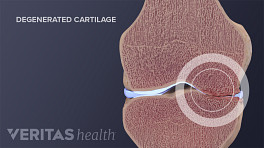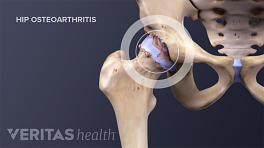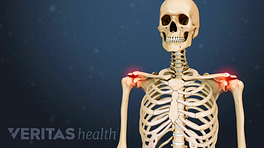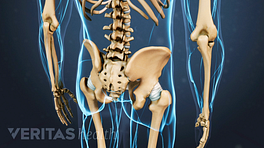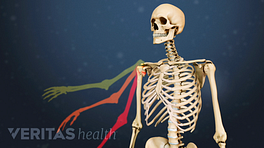Acromioclavicular osteoarthritis is a type of shoulder arthritis that involves degenerative changes to the cartilage and other structures in the acromioclavicular joint—leading to pain, stiffness, and weakness in the front of the shoulder.
The acromioclavicular joint, sometimes called the AC joint, is the point where the clavicle, or collarbone, meets the acromion, which is the highest part of the scapula, or shoulder bone.
While the clavicle and acromion do not move much in relation to one another, the AC joint allows for raising the arm over the head as well as moving the arm across the body.
Slippery joint cartilage normally helps enable this movement.
But in acromioclavicular joint arthritis, the cartilage lining the acromion and covering the end of the clavicle becomes inflamed.
This inflammation may be due to the wear and tear of aging, overuse of the AC joint resulting from sports or occupational hazards, or previous traumatic injury.
As the inflamed cartilage in the AC joint degenerates, the space that normally exists between the acromion and the end of the clavicle narrows or disappears completely, and the bones begin to grind against each other.
Osteophytes may then form on the two bones, which can create even more friction in the joint.
These osteophytes can also irritate and pinch shoulder tendons and the rotator cuff muscles, a condition known as shoulder impingement syndrome.
Pain, swelling, and tenderness from acromioclavicular joint arthritis is usually localized to the front and top of the shoulder.
Acromioclavicular joint osteoarthritis can make simple movements like reaching toward a shelf, swinging a golf club, or putting on a seatbelt difficult or impossible.
In addition to acromioclavicular joint osteoarthritis, glenohumeral joint osteoarthritis is also a common type of shoulder arthritis.

